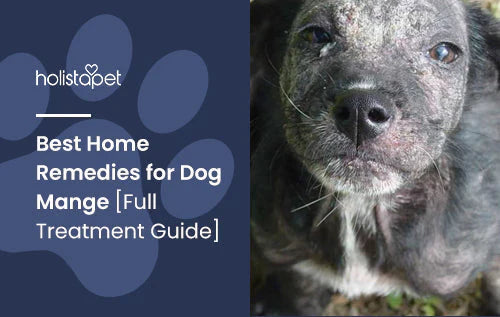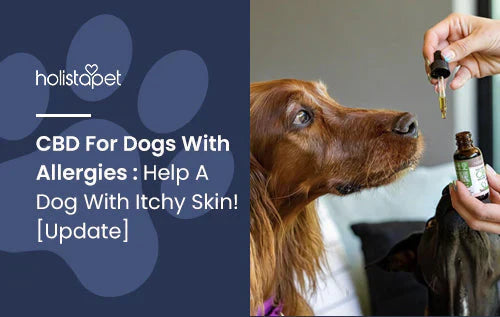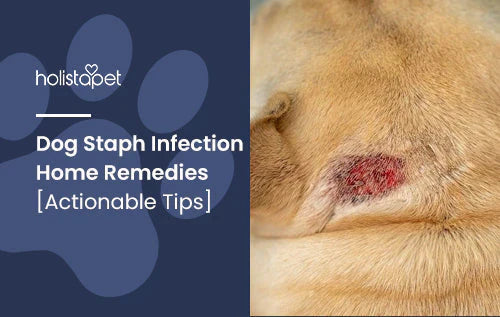It’s normal for dogs to shed and scratch themselves from time to time. However, if a dog scratches and its skin turns red or its hair falls out there’s a problem. Mange is a parasitic problem for dogs that can result in hair loss, damage to the skin, and more. Thankfully there are some home remedies for dog mange such as yogurt, honey, olive oil, aloe vera, and more. Although the best home remedy for dog mange varies depending on your dog, the type of mange they have, and how far along the condition is.
What is Dog Mange?
Dog mange is a disease that occurs when microscopic mites decide to live on your dog’s skin. These mites lay their eggs in the dog’s skin, which hatch into larvae that eventually turn into adult mange. A nasty cycle of mange reproduction usually follows. Owners usually notice the problem when they see patches of hair missing or damaged skin, however, mange is not the only cause of hair loss in dogs.

Identifying the different types and signs of mange can be the first step in combating the issue. There are different kinds of mange, and each comes with its own set of problems and solutions. The types of dog mange include:
Demodectic Mange
Demodectic mange is the most common form of mange in dogs. Demodex canis mites are part of the genus Demodex and live in the hair follicles of dogs. They have eight legs and a long wide body that resembles a cigar. This type is often called Demodex or red mange.
Sarcoptic Mange
Sarcoptic mange, or canine scabies, is caused by sarcoptic mites that live just beneath the surface of a dog’s skin. These spider-resembling mites burrow their way into the skin and also lay eggs that hatch and go onto reproduce the parasite. These mites prefer areas on dog’s bodies with barely any hair, like their ears, elbows, hocks, belly, and armpits.
Cheyletiellosis Mange
Cheyletiellosis mange is caused by a parasite known as the Cheyletiella yasguri. These contagious mites cause issues similar to the other types of mange but are known for the “walking dandruff” condition. It received this trope because of its ability to walk around a dog’s keratin layer. It leaves behind dandruff-like dust on the surface of the skin and hair.
How Does A Dog Get Mange?
Usually, canine mange is caused by a transfer of the Demodex mite between a puppy and it’s mother during their first days of life. There are a few types of mange, each with their cause.
Causes of Demodectic Mange in Dogs
We’ve already established that the Demodex canis mite lives in the hair follicles of dogs. Generally, the cause of demodectic mange is due to a weak immune system. The lack of defense also allows the parasite to reproduce quickly. Younger dogs will often contract this parasite through normal nursing of the mother dog and possibly because of their immature immune system.
Older dogs with weak immune systems are also at risk. All dogs with vulnerable immune systems are more susceptible to develop mange, even if it’s because of another illness or medication. A common occurrent of adult-onset Demodicosis are hormonal imbalances like Cushing’s disease and low thyroid levels.

Causes of Sarcoptic Mange in Dogs
Sarcoptic mites cause sarcoptic mange. It is incredibly contagious between dogs, and can easily be transferred through direct contact or shared bedding with an affected dog. On more rare occasions, pups can also get this from urban foxes.
Causes of Cheyletiellosis Mange in Dogs
Cheyletiellosis mange, or “walking dandruff” is caused by dogs coming into contact with other pets at animal shelters, groomers, or areas where an overflow of dogs is too close together.
What Are the Symptoms of Dog Mange?
Because there is more than one type of mange, the symptoms of dog mange vary depending on the type. Keep reading to learn more.
Demodectic Mange Symptoms in Dogs
The symptoms of demodectic mange in dogs can vary, but the two leading indicators are usually:
- Itchiness: Compared to other mange, Demodex does not make dogs incredibly itchy. Itchiness depends on how severe it is and how your dog reacts to it, along with any secondary bacterial skin infections that may have been caused by the mites
- Hair Loss: The most apparent symptom of demodectic mange is the loss of hair in patches. It usually begins around the dog’s face, more often around their ears and eyes.
At its inception, with only a few patches of hair missing, this mange is referred to as localized demodectic mange. If it worsens or spreads to cover three or more body sites (e.g. leg, trunk, head), the condition is called generalized demodectic mange.
How Can You Tell If A Dog Has Localized Demodectic Mange?
You can identify localized demodectic mange by noticing if there are bald patches on your dog’s head or face area. It’s most common in puppies but can affect any dog.

How Can You Tell If A Dog Has Generalized Demodectic Mange?
If your dog has generalized demodectic mange, you will notice significantly more bald patches on their body. At this level, a dog might begin to produce skin infections, which could create itching. Irritated skin is prone to a bacterial infection which will create a foul odor if present. Generalized mange mainly affects dogs with an immunity defect and who are younger than 18 months. If an older dog is affected by this condition, it might be a sign of an underlying issue with their immune system.
Sarcoptic Mange Symptoms in Dogs
The symptoms of sarcoptic mange in dogs can start appearing in 10 days to 8 weeks after a dog comes in contact with a scabies-infected dog. This mange is highly contagious between dogs, and occasionally to humans. In most cases, the areas infected first are a dog’s ears, belly, chest, hocks, and elbows. Some common symptoms of sarcoptic mange include:
- Hair loss
- Rashes
- Yeast infections
- Yellow crustiness
- Extreme itchiness
- Lymph node inflammation
- Redness and skin irritation
Cheyletiellosis Mange Symptoms in Dogs
The symptoms of cheyletiellosis mange in dogs vary, but include:
- Hair loss
- Some itchiness
- Irritated skin and redness
- Dandruff, usually along the dog’s back
Home Remedies for Preventing Dog Mange
Preventing dog mange is a tricky thing to try and master. One tactic is going the extra mile to improve your dog’s immune system. If your dog already has mange, getting a vet’s opinion is the safest route. Additionally, there are some at-home preventative measures you can use to help avoid a full-blown infestation.
How to Prevent Demodectic Mange in Dogs
Ensuring your pup is in good health can play a huge role in preventing a dog from getting demodectic mange. A dog with optimal health means they also have a robust immune system, which can help lessen the chance of them developing mange. Monitoring your dog’s stress levels can also help as stress affects immunity.
Spaying and neutering not only prevents a previously infected dog from passing it on, but it also helps in reducing stress. You should also keep up with your dog’s flea and deworming treatments to avoid any stressful outbreaks.

How to Prevent Sarcoptic Mange in Dogs
Although there aren’t specific solutions on how to prevent sarcoptic mange in dogs, there is a link between mange and weak immune systems. Therefore, ensuring your dog has a healthy immune system is one of the best things you can do to help prevent them from getting sarcoptic mange. Similarly to demodectic mange, keeping your dog’s stress levels low will do wonders.
How to Prevent Cheyletiellosis Mange in Dogs
A few things you can do to prevent your dog from getting cheyletiellosis mange include:
- Keeping them away from infected dogs
- Paying close attention to their behavior and abnormalities in their coat
- Maintaining a clean environment around them (washing their bedding frequently)
If you’re worried about a repeat mange infestation, remember to sanitize all areas your dog has wandered. Washing their bedding, or replacing their bed, if possible, is also a good idea. Also, remember to always keep your dog’s flea treatments and worming up to date. You want to keep your dog's skin and immune system healthy. This gives your dog the best chance to fight off any further outbreaks.
What Are the Best Home Remedies for Dog Mange?
Sometimes treating your dog with veterinarian prescribed medicine or chemicals can seem intimidating. As natural treatments become more and more available for people, the same is happening for pets. Wondering what home remedies for dog mange work best is rational. Here are a few home remedies for treating demodectic mange in dogs you can try.
Yogurt
Applying organic unflavored yogurt has been used by pet owners to treat a wide range of ailments. The healthy bacteria (acidophilus bacteria) found in yogurt have properties that can combat your dog’s irritation. It’s best to apply a tablespoon around the impacted area for 15 minutes.
Honey
Honey is great for soothing your dog’s skin and killing any secondary bacterial invaders. If you can, use raw and organic honey. Rub it on their skin and leave it applied for 15 minutes. Doing this twice a day can help quicken the process.
Olive Oil
Your dog’s skin and coat can both benefit from olive oil. When you apply this on your dog, it may help soothe irritated and dry skin. About one to three tablespoons, depending on the size of the infected area, should do the trick when left on for 15 minutes twice a day.

Aloe Vera
Whether you opt for bottled aloe vera or use the plant directly, it can still help soothe mange infected skin. When applied evenly to their infected skin, this natural antiseptic has tons of anti-parasitic values that may help your dog feel better in no time.Topically, aloe vera helps soothe skin irritations and reactions. Yes, your pup may consume aloe vera as well! The succulent gel is great for digestive issues, and since it is 98% water, it will certainly hydrate your dog.
Beware! If you plan on giving your pet some Aloe, you must know what part is good for them and which part is not. When you give your dog aloe, the clear gel will help your dog, but the plant's latex is toxic. The latex is the yellow layer between the green leaf and clear gel within an aloe leaf. It contains a natural chemical called aloin, which may cause all kinds of skin issues and digestive trouble if consumed orally when applied topically.
Apple Cider
Adding a few tablespoons of organic apple cider to your dog’s food can help treat secondary yeast infections from mange infestations. Doing this once a day is enough. Apple cider vinegar has antibacterial and antiseptic properties that may help regulate PH levels, in turn, this promotes speedy healing.
Lemon
A mixture of water and lemon juice, which is acidic, has helped many pet owners treat secondary yeast overgrowth on the skin which can be rather itchy. Usually, the juice of one lemon and one liter of water can help kill the yeast and may help to eliminate other bacteria or fungi. Infusing the mixture with garlic may increase the benefits.
When trying out any of these home treatments for canine mange, make sure to monitor your dog, so they don’t end up licking or eating any of it.
CBD Oil for Mange on Dogs
If you're open to a more holistic approach for dealing with dog mange, consider CBD oil for dogs as an option. Several people use CBD to help improve certain conditions including itchy irritated skin. Using a pet-friendly CBD product from trusted brands like HolistaPet may help your dog cope with a mange outbreak.
CBD can help soothe itchiness and irritation while promoting higher levels of comfort. It encourages a calm state of mind which allows a tense body to relax. Less stress on the body equals a stronger immune system to combat any potential infestations of Demodex, Scabies, Cheyletiella. A healthy immune system works to keep invading mites at bay.
If you are introducing your pet to CBD for the first time, or are trying a new brand, it’s always best to follow the given dosage guidelines. If you are unsure about the dosage amount you can find additional dosing information along with general dosage suggestions on our CBD for pets dosage page. Don't hesitate if you need a second opinion on giving CBD to a dog with mange, pay a visit to a trusted holistic veterinarian.
What Breed Of Dogs Are Most Prone To Developing Mange?
Did you know that certain dog breeds are more susceptible to developing mange? Some think this is because of genetic characteristics passed down from generation to generation, eventually leading to specific breeds becoming less resilient to infestation. Because these breeds are more likely to develop a serious case of mange, it is important to be aware of your dog's vulnerability so you can plan accordingly.
Some dog breeds that are prone to developing mange are:
- Old English Sheepdog
- Collie
- Dachshund
- Pointer
- Pug
- Shar-Pei
- German Shepherd
- Doberman Pinscher
- Chow Chow
- Chihuahua
- Afghan Hound
- Beagle
- Great Dane
Other factors can influence a dog's likelihood of developing demodectic mange mites. If your dog's immune system is compromised, it is more likely to develop this condition. Similarly, it is much more likely for elderly dogs and puppies to develop mange. This condition will likely clear on its own in a young dog, but an older pet may require some additional care.
Dogs can get mange at any point in their lives, but as they age, they're more likely to suffer from skin irritations like this one. Regardless of breed, senior dogs who have an underlying medical condition are prone to develop mange. Here is a quick rundown of some of those factors that may cause mange.
- Nervousness
- Pregnancy
- Heartworms
- Intestinal worms
- Diabetes
- Hypothyroidism
- Medication
Can I Get Mange From My Dog?
If your dog has developed mange, you surely have some concerns about addressing their discomfort, but what about you? Are humans able to catch mange? The answer to this question is, unfortunately, yes. However, it is not all bad news, so don't expect to be in the doghouse for long! While mange may infest humans, we are lucky that the mites cannot complete their full life cycle with a human as a host. This means that you can still experience skin irritation, but the symptoms should be short-lived.
If your dog has mange, you can prevent catching it yourself (or giving it to your children) by washing your dog's bedding while doing the best you can to keep it off furniture and any other places you and your family spend a lot of time. It is also good to be careful to keep some distance from your dog, being especially sure to keep young children distanced, as they are particularly susceptible to infestation.
Can Puppies Develop Mange?
Unfortunately, your puppy is not exempt from this common skin disease. Pet owners still need to be on the lookout for mange, especially in puppies! Like babies, puppies are vulnerable to sickness because their immune systems are still adjusting to react to the outside world; in general, they still have a lot of growing up to do!
It is not uncommon for a puppy to develop mange, and in most cases, so long as skin infection does not occur, infestation should be relatively brief. If, however, your dog is immunocompromised, you may need to take additional steps to ensure they have a quick recovery. In this case, we recommend you bring your puppy to a veterinarian for more assistance.
Final Thoughts - What Is The Best Home Remedy For Dog Mange
Mange can potentially wreak havoc on a dog's skin and body, resulting in hair loss, intense itching, and potentially even skin infections. Luckily for dogs suffering this itch, there are home remedies for treating mange, many of which are quite simple! Many people have seen success in mange treatment by employing these strategies, with some of the best being a combination of ingredients such as apple cider vinegar, olive oil, and the ever-useful aloe vera.
However, if your pup's mange persists, visit a vet. They will be able to provide practical advice and solutions to treat this bothersome condition. More so, a vet will examine your pet and make sure their condition is a consequence of some other ailments. Mange can be a big hassle for you and your dog, so next time you notice skin scraping, itchy spots, or missing fur, visit back with us here for the best dog mange home remedies! Also, stop by our webshop for CBD topical remedies, like our all-natural dog shampoo!







![Probiotics For Dogs [Soft Chews] - HolistaPet](http://www.holistapet.com/cdn/shop/files/Probiotic-Infographic-1_472d7a29-e30c-435a-9638-1365d8c3a9f9.jpg?v=1725384841&width=104)




























Leave a comment
All comments are moderated before being published.
This site is protected by hCaptcha and the hCaptcha Privacy Policy and Terms of Service apply.